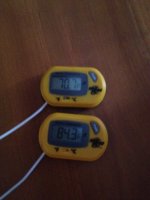Eponine
New member
Hello,
I am getting ready to upgrade my dear baby to her 20 gallon, and with it, I am buying new things. I'm noticing more and more how her heat pad doesn't heat up the rest of the tank at all, leaving it room temp (quite cold). So she spends all her time under her log where the pad is, and I'd like to see here more. So I am wondering if I should get a heating lamp to go along with the pad. I've heard people say some pretty bad things about it, but I'm not sure. So, thoughts on lamps? Yes, no, helpful suggestions for use? Help me out here!
I am getting ready to upgrade my dear baby to her 20 gallon, and with it, I am buying new things. I'm noticing more and more how her heat pad doesn't heat up the rest of the tank at all, leaving it room temp (quite cold). So she spends all her time under her log where the pad is, and I'd like to see here more. So I am wondering if I should get a heating lamp to go along with the pad. I've heard people say some pretty bad things about it, but I'm not sure. So, thoughts on lamps? Yes, no, helpful suggestions for use? Help me out here!

